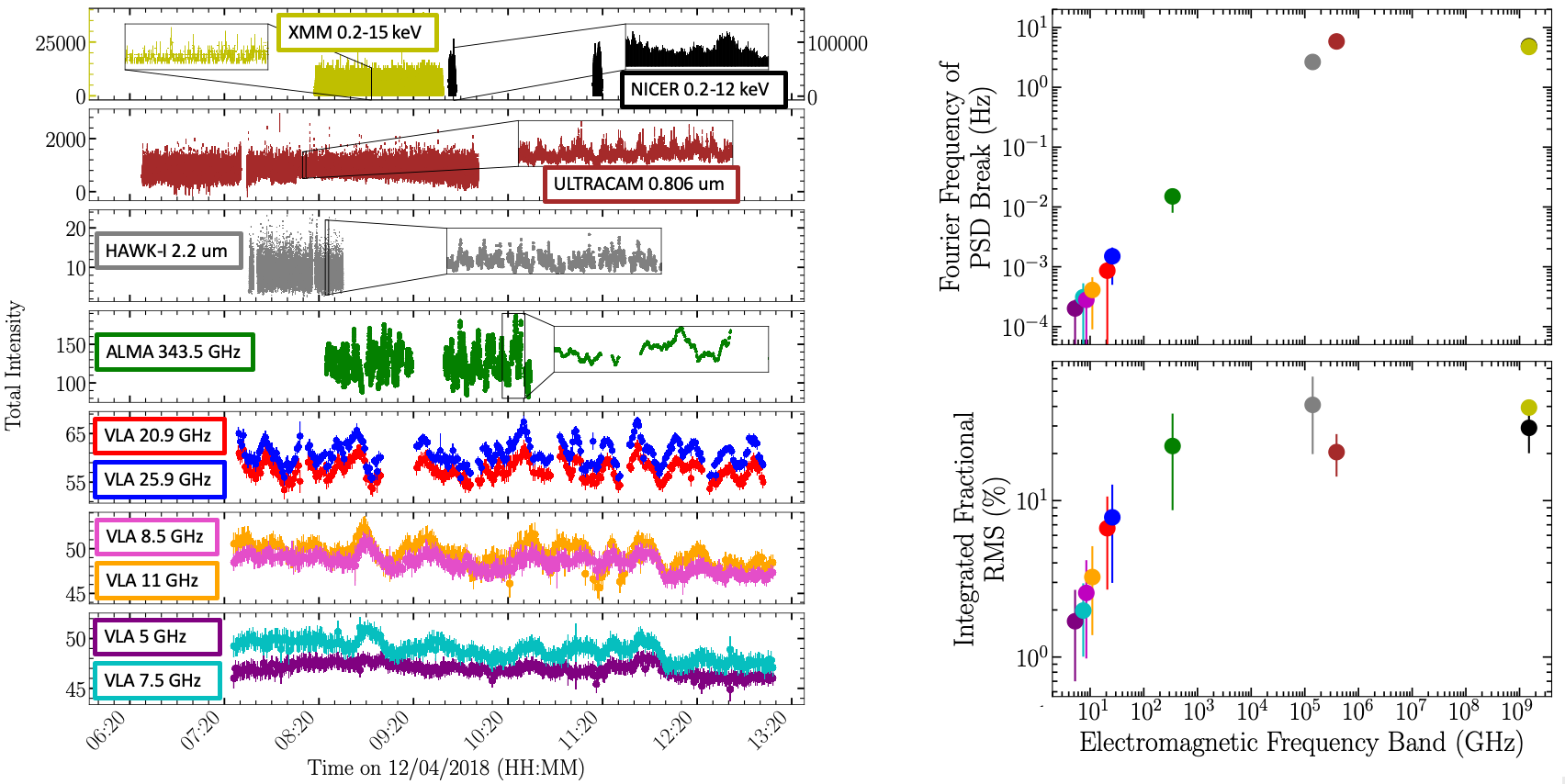NICER / ISS Science Nugget
for March 25, 2021
NICER teams up with multi-wavelength facilities to study the Galactic black hole system MAXI J1820+070
A key open question in high-energy astrophysics is understanding how black holes act as powerful cosmic engines, consuming large amounts of material and expelling matter in the form of outflows ("jets") traveling at near the speed of light. Black hole X-ray binaries (BHXRBs — binary systems containing a stellar-mass black hole pulling matter from a companion star) are ideal testbeds to study the jet phenomenon, and time-domain observations offer a promising new way to study jet physics. Through detecting and characterizing how the brightness of the emission we receive from these jets changes on different timescales and across a wide range of electromagnetic frequencies (probing emission from different regions of the inflowing matter and jet), we can measure properties that are difficult, if not impossible, to measure by traditional spectral and imaging methods (e.g., size scales, geometry, jet speeds, the sequence of events leading to jet launching).
In March 2018, a previously unknown BHXRB, MAXI J1820+070, was discovered by the JAXA ISS payload MAXI when it entered into a bright outburst. A team of scientists coordinated simultaneous multi-wavelength fast-timing observations during the outburst, sampling ten different electromagnetic frequencies (radio through X-ray) over a 7-hour period with NICER, ESA's XMM-Newton, the ULTRACAM instrument mounted on the New Technology Telescope (NTT; Chile), the HAWK-I instrument mounted on the Very Large Telescope (VLT; Chile), the Atacama Large Millimetre/Sub-millimetre Array (ALMA; Chile), and the Jansky Very Large Array (JVLA; USA). MAXI J1820's emission was observed to be highly variable and highly correlated between the different electromagnetic bands. Additionally, analysis revealed, for the first time in a BHXRB, evolving variability properties across these bands (see Figure). Through modelling of these variability properties, the team was able to derive fundamental jet properties from these time-series signals alone, finding that MAXI J1820 launched a highly relativistic (∼0.98 times the speed of light) jet that carried a significant amount of power away from the system (equivalent to ∼0.6 times the broadband X-ray luminosity). These results by A. Tetarenko (East Asian Observatory; Hilo, HI) et al., accepted this week for publication in the journal Monthly Notices of the Royal Astronomical Society (MNRAS), demonstrate that time-domain analysis is a powerful diagnostic tool for probing jet physics near black holes.

Figure: Fast timing analysis of the BHXRB MAXI J1820+070. Left: Simultaneous, multi-wavelength light curves obtained during the 2018 outburst of MAXI J1820+070. The main panels from top to bottom show light curves for progressively decreasing electromagnetic frequencies, and the inset panels show zoomed-in versions of the light curves. We observe clear variability in the emission, taking the form of rapid flaring across all of the electromagnetic frequencies sampled. Right: Variability characteristics of the emission derived from Fourier power spectra — Fourier frequency of the power spectra break (which is likely tracing the jet size scale) and integrated fractional root mean square (RMS) variation (which is a measure of the amplitude of the variability). We observe clear trends in these variability properties with electromagnetic frequency, trends that are consistent with jet model predictions.
<< Previous
Main Index
Next >>